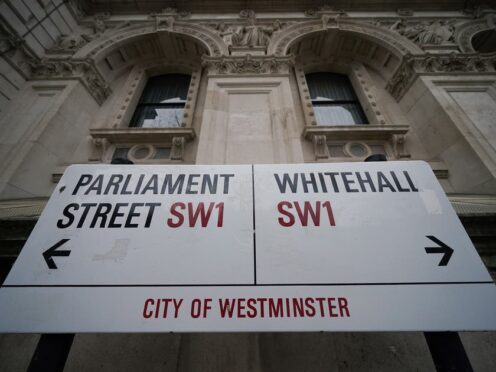
Using artificial intelligence (AI) could save the Government £200 billion of taxpayers’ money over five years, according to a report from Sir Tony Blair’s think tank and leading technology firm Faculty.
The paper argues that the technology can transform public services and says a dedicated “AI mission control” should be established in 10 Downing Street by Rishi Sunak or Sir Keir Starmer inside the first 100 days of their new government.
The UK Government should also build its own AI capability which could be used on national security and sensitive tasks, the report said.
Existing AI tools could be used to improve public services by reducing bed occupancy in the NHS, processing Personal Independence Payment claims and reduce teachers’ overtime by assisting with marking and lesson planning.
Faculty CEO Marc Warner, who played a key role in developing the Government’s response to the Covid-19 pandemic, co-authored a foreword to the report with former prime minister Sir Tony.
They said: “The scope and scale of change will be vast. And it will come quickly.”
Stressing the need for action, the pair warned that “a failure to modernise, reform and deliver is a perilous course for a nation and those who govern it” but AI “if gripped properly” should make it an “exciting and creative time to govern”.
AI could help “reimagine the state”, they said.
“Many of the countless daily tasks in government are repeatable processes carried out on a mass scale.
“Almost all of these can be made better, faster and cheaper.”

With the potential for £40 billion-a-year savings, they said: “At a time when government is unwieldy, expensive and slow, AI can save our public services, making them more personalised and human-centric.”
The paper recommends creating a “digital public assistant” that would recommend eligible services, simplify applications and payments for the public and provide informed advice to government based on the input from citizens.
A multidisciplinary AI support team could streamline civil servants’ work, cut repetitive administrative tasks and free them up for tasks that better suit their skills and dedication.
A “national policy twin” could be used at every stage of the development of new policies, including modelling different scenarios and their impacts.
Ahead of a major summit on AI taking place in Seoul this week, Mr Sunak and South Korean President Yoon Suk Yeol said the technology “has the potential to help us cure diseases, fight climate change, revolutionise public services and improve people’s lives”.
Writing in the i paper, the two leaders said: “Together, we are determined to seize the potential of this technology to transform the world for the better.”
Meanwhile, the Government will open a new office of the AI Safety Institute in San Francisco this summer, its first overseas outpost.
Technology Secretary Michelle Donelan said: “This expansion represents British leadership in AI in action.
“It is a pivotal moment in the UK’s ability to study both the risks and potential of AI from a global lens, strengthening our partnership with the US and paving the way for other countries to tap into our expertise as we continue to lead the world on AI safety. “

Enjoy the convenience of having The Sunday Post delivered as a digital ePaper straight to your smartphone, tablet or computer.
Subscribe for only £5.49 a month and enjoy all the benefits of the printed paper as a digital replica.
Subscribe